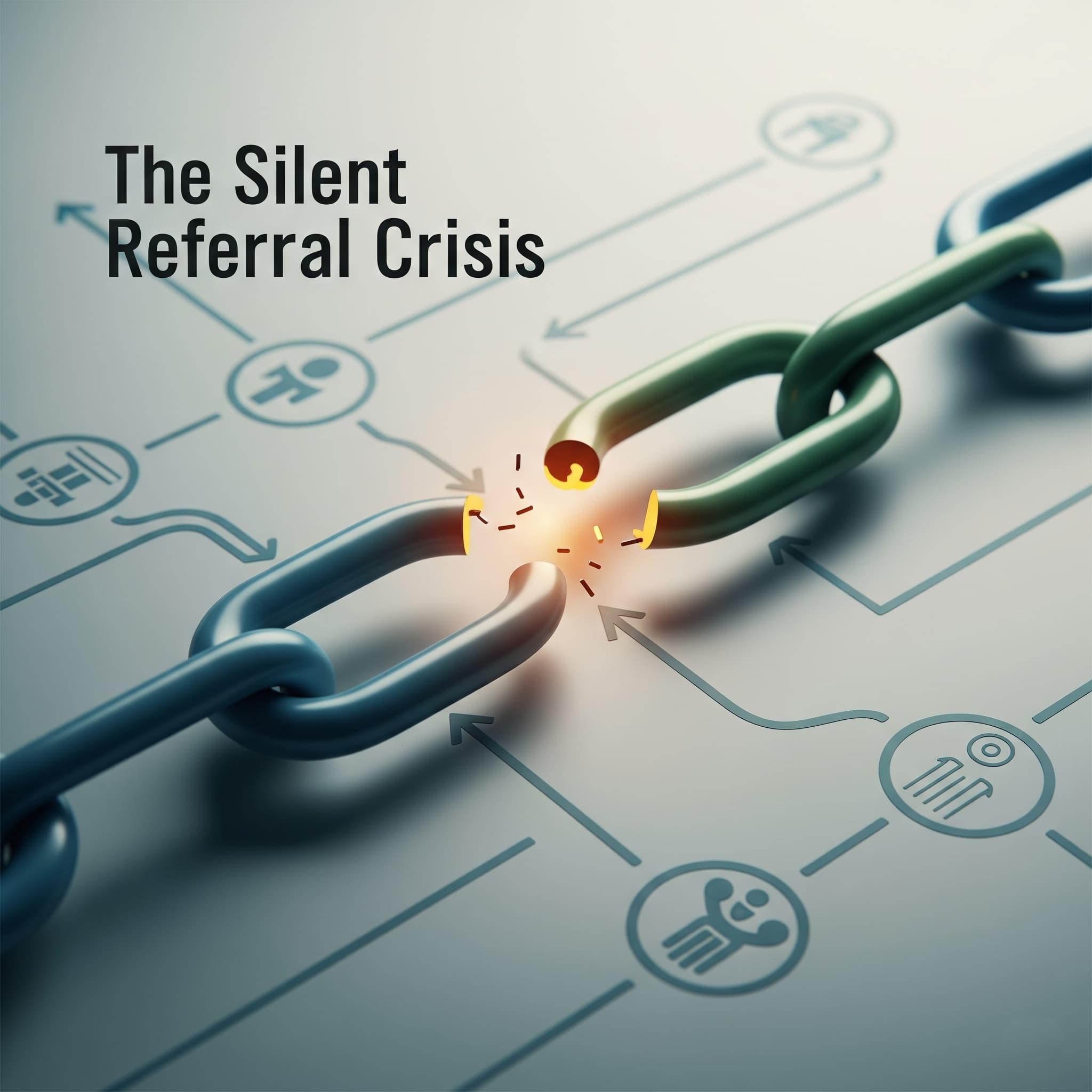The Silent Referral Crisis: What Most Hospitals Get Wrong
- July 7, 2025
- Nexogic

The Silent Referral Crisis: What Most Hospitals Get Wrong
Walk into any hospital, and you’ll hear this at least once a day: “We referred the patient, but they didn’t show up,” “They went somewhere else, and we never heard back.”
These aren’t small problems. They are part of a bigger, quieter issue affecting almost every healthcare facility: Referral systems are not working.
Most hospitals don’t even realize it until it costs them patients, money, or their good name.
Why Referrals Are So Important
A referral is more than just a suggestion. It’s a clinical handover built on trust; an agreement that care needs to continue through teamwork.
This patient needs care beyond what I can offer right now, and I trust another colleague to continue that journey.
If it is done properly it can lead to better patient outcomes.
When it is handled poorly, leads to chaos.
Research shows that over one-third of referrals never get completed.
Where Most Referrals Fail
It’s not about people not caring. It’s all about structured system.
Here’s where things usually go wrong:
- No system to track referrals once the patient leaves.
- Poor communication between departments or providers.
- Patients are left confused about what to do or where to go.
- Manual office tasks that are too slow to keep up.
- No feedback on whether a referral succeeded, was delayed, or was lost.
One multi-specialty center improved follow-through by 65% in just 3 months after introducing a basic tracking tool.

Doctors Feel the Strain Too
A missed referral doesn’t just affect the patient. It also impacts the doctor who made the referral.
When they don’t hear back:
- They feel disconnected from the patient’s progress.
- They may lose confidence in the system.
- Fewer referrals happen in the future, not from anger, but from exhaustion.
Less teamwork means slower diagnoses, broken care, and professional burnout.
What a Proper Referral Flow Looks Like
Imagine a referral process that actually works; it’s smooth, traceable, and complete.
Here’s how it should ideally happen:
- The referral is documented with important clinical information.
- The patient gets clear, guided instructions.
- An appointment is booked or confirmed.
- The receiving doctor updates the outcome or action plan.
- The referring doctor receives brief feedback.
- The hospital logs the entire process for learning and improvement.
Healthcare systems that use structured referrals report a 20–25% jump in how well care is coordinated and in patient satisfaction.
Small Changes That Make a Big Difference
Fixing referrals doesn’t mean installing a completely new system. You can start with simple steps:
- Create a simple and standardized referral form.
- Assign someone to track referrals every 48 hours.
- Encourage short written updates from receiving departments.
- Keep a central log of referrals made, completed, and missed.
- Analyze monthly trends to find problems or repeated issues.
Most failures are not due to neglect; they happen because no one is watching the middle of the journey.
How Nexogic Can Make Referrals Seamless
We’re excited to announce that we’ll soon be launching our advanced patient referral system, built exclusively for hospitals and clinics ready to take referrals seriously. With Nexogic’s upcoming platform, you will be able to:
- Seamlessly manage and track patient referrals
- Strengthen collaboration among healthcare professionals
- Ensure timely follow-ups and better patient outcomes
- Gain insights to optimize your referral process
- Send and track referrals across departments and practitioners.
- Get notified when a referral is accepted or completed.
- Analyse the referral data and find the gaps.
- Build accountability with a secure, doctor-to-doctor workflow.
In short: you refer, they receive, the system confirms, and no one is left guessing.
Because behind every referral is a real patient who deserves to reach the right care without getting lost in between.
Final Words:
Referral failures aren’t just process issues they’re patient risks. It’s time to fix the gaps. Start by tracking referrals, sharing feedback, and standardizing your system. And if you’re ready for a smarter solution, let Nexogic help close the loop – because every patient deserves to reach the right care, without getting lost in between. Stay tuned — Nexogic’s referral system is coming soon to transform the way you handle patient referrals.


